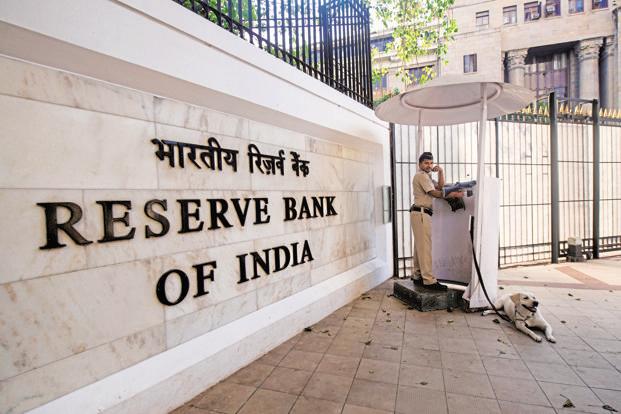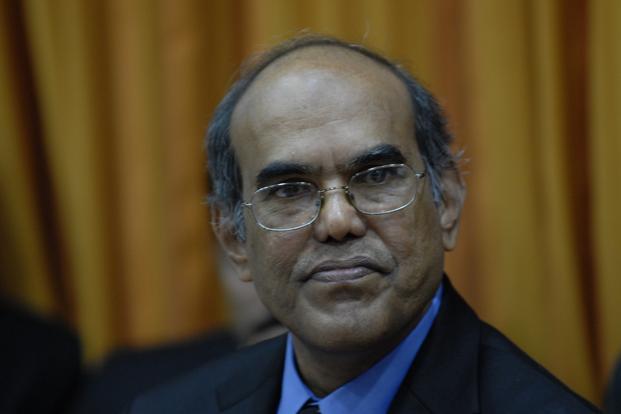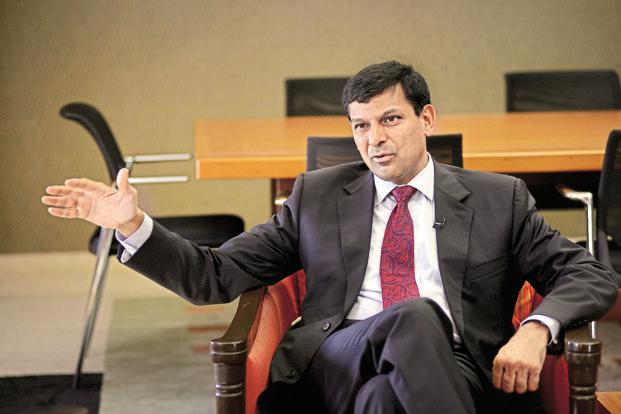There are two compelling reasons for the Reserve Bank of India (RBI) to stick to its March stance that there is very little room for monetary easing when it announces the annual monetary policy for fiscal 2014 on Friday—elevated retail inflation and a record-high current account deficit (CAD).
March consumer price, or retail, inflation was 10.4% and a reduction in fuel subsidies will not contribute to its moderation. CAD touched a record high of 6.7% in the third quarter of fiscal 2013, taking the average in the first nine months of 2012-13 to 5.4%. CAD is expected to drop in the fourth quarter, but it could still be around 5.1% for the fiscal year and this weighs against a rate cut.
Yet, the Indian central bank is expected to cut the policy rate primarily because of a sharp drop in wholesale price inflation as well as so-called core inflation, or non-food, non-oil, manufacturing inflation.
Wholesale inflation dropped to a 40-month low of 5.96% in March, way below the most optimistic market estimates and lower than RBI’s year-end inflation projection. The 3.48% core inflation in March, too, was below most market estimates, and its lowest since February 2010. The average core inflation rate in the year ended March is 4.84% and average wholesale inflation was 7.35%, both at their lowest since fiscal 2010.
The inflation outlook will continue to remain low at least until September-October, encouraging RBI to make a rate cut on Friday and possibly even another one later—by a quarter percentage point each—and bring down the policy rate to 7% before September from 7.5% now. Alternately, RBI can frontload the action by going in for a half percentage point rate cut on Friday itself, but the chances of that are very slim.
Overall, all growth indicators remain considerably weak despite a 0.6% rise in factory output in February against analysts’ estimates of a 1.5% contraction.
The average factory output growth in the first 11 months of the fiscal—between April and February—was 0.9%, the lowest since 2009. And both the HSBC Manufacturing Purchasing Managers’ Index and Services Purchasing Managers’ Index dropped in March to 52 and 51.4, respectively, the lowest in about one-and-a-half years. Car sales shrank in the fiscal year for the first time in a decade and air passenger traffic fell for the 10th consecutive month in February.
This will be RBI governor D. Subbarao’s fifth and last annual monetary policy since he took over the reins in September 2008 after the collapse of US investment bank Lehman Brothers Holdings Inc. that plunged the world into an unprecedented credit crunch. In relative terms, this is possibly Subbarao’s easiest policy as low inflation and the even lower inflation outlook in the short term—because of a drop in crude and gold prices and insipid growth indicators—will help him make up his mind on the rate trajectory. Inflation is expected to rise only after he leaves the corner room at the Indian central bank’s headquarters on Mint Road in Mumbai in September.
The rate cut could be laced with a less hawkish statement on the monetary stance, unlike in March when RBI lowered the rate, but dampened the market’s spirits with its guidance: “The headroom for further monetary easing remains quite limited.” This is because inflation risks are expected to continue to recede, at least for the next four months, with a meltdown in global commodity prices and a slowing Chinese economy.
However, the bigger challenge before RBI is monetary transmission and making the banks pare their loan rates when they are finding it difficult to cut deposit rates. The only way to do this is through a cut in banks’ cash reserve ratio (CRR), or the portion of deposits that commercial banks need to keep with RBI.
CRR, SLR and OMOs
CRR is now 4% and it can be pared to any level, even zero, but RBI may not opt for a cut at this juncture.
The daily average cash deficit in the system in April was a little over Rs.87,000 crore after it rose to Rs.1.11 trillion in March. However, the core cash deficit is lower as the government continues to keep its surplus cash with RBI. Since this money is not a part of the system, it adds to the cash deficit. Once the government starts spending, the cash deficit will come down.
The cash deficit in the system will rise later because of record government borrowing, forcing RBI to cut CRR. For the time being, it can buy bonds from banks through its so-called open market operations (OMOs) to ease the pressure on liquidity. Last year, it bought bonds worth Rs.1.55 trillion through OMOs.
The government will borrow Rs.5.79 trillion this year to bridge the fiscal deficit. After the redemption of old bonds, the net borrowing will be Rs.4.84 trillion. So far, it has borrowed Rs.45,000 crore and another Rs.15,000 crore will be raised on Friday. To accommodate such a massive borrowing programme, RBI may have to cut CRR by half a percentage point in phases during the year, which will release around Rs.35,000 crore (on the basis of the current deposit portfolio of banks) and another Rs.1.65 trillion can be infused through OMOs.
RBI can also cut the banks’ statutory liquidity ratio (SLR), or the floor for banks’ compulsory bond buying to release money that can be used to give loans to borrowers. This can be pared to 22% from the 23% that it is now, although most banks have much higher SLR holdings anyway.
Yet another way of generating money is the purchase of foreign currency—for every dollar RBI buys, an equivalent amount of rupees flows into the system. But that’s unlikely at this juncture as the rupee is not strengthening against the greenback. While OMOs, dollar buying and a cut in SLR can benefit the system, banks can only benefit from a CRR reduction as they will earn interest on the money released through such a reduction.
GDP, inflation projections
The a
photo
nnual policy also unveils RBI’s estimates of growth in the banking sector’s credit, deposit, money supply (M3) and inflation as well as India’s economic growth for the fiscal year.
The inflation scenario in the year that ended on 31 March was volatile and the central bank changed its year-end inflation estimate thrice after pegging it at 6.5% in April 2012. It raised the estimate to 7% in July, and 7.5% in October, before lowering it to 6.8% in January. The final figure, which surprised all analysts, is lower than all RBI estimates. This year, RBI’s inflation estimate could be around 6% even though it would be lower than that—5% or even below—by September when Subbarao ends his tenure.
Similarly, RBI also kept changing growth projections for the economy last year, starting at 7.3% in April, revising it to 6.5% in July, 5.8% in October and, finally, 5.5% in January. The actual growth of gross domestic product (GDP) in Asia’s third largest economy in fiscal 2013 could be around 5%. It dropped to 4.5% in the December quarter, the lowest in a decade, after growing at 5.5% and 5.3%, respectively, in the first two quarters.
The World Bank estimates that the Indian economy could grow at 6.1% in 2014 and the International Monetary Fund’s growth projection for the calendar year ending December 2013 is even lower at 5.7%, but the Prime Minister’s economic advisory council is more optimistic, pegging growth this fiscal at 6.4%. RBI is expected to estimate it at lower than 6%; it could be around 5.8%.
The annual monetary policy normally goes beyond money measures and touches upon other banking issues related to inspection, supervision and even customer services, besides technical issues related to banks’ bond holdings, among others. The Friday policy may reduce the so-called held to maturity, or HTM, limit for banks’ bond holding to 23%, down from 25%. Banks do not need to mark to market or value their bonds at the prevailing market price for the HTM category.
In a rising interest rate scenario, they end up booking losses while marking their bond portfolio to market while HTM is protected from this as debt in this category is valued at the acquisition cost. Yields and prices of bonds move in opposite directions. Banks were allowed to keep 25% of their bond holding in HTM when their SLR holding was 25%. Since this has been brought down to 23%, ideally, the HTM limit should also come down.
On gold
RBI may tighten gold loan norms by stipulating higher capital requirements for such loans and restricting over-the-counter sales of the metal by banks.
Consumer protection
Finally, the central bank may also tweak norms on the sale of various financial products by banks that often lose sight of customer interest. It is unlikely to interfere in product design and pricing, but will make the banks responsible for marketing strategy and product development. In other words, banks will continue to enjoy pricing freedom, but this will be ring-fenced by banks being made responsible towards consumers.
The central bank may force banks to be proactive in compensating consumers for their lapses, increasing transparency in the disclosure of incentives for selling insurance and mutual fund products, and protecting customers in case of faulty electronic banking transactions.
RBI may also tighten know your customer norms to plug loopholes in transactional banking after its inspection found banks selling insurance, gold and other financial products without verifying customers’ identities and getting into high-value cash transactions, besides filling in forms with the wrong PAN (permanent account number) issued by the income-tax department.



